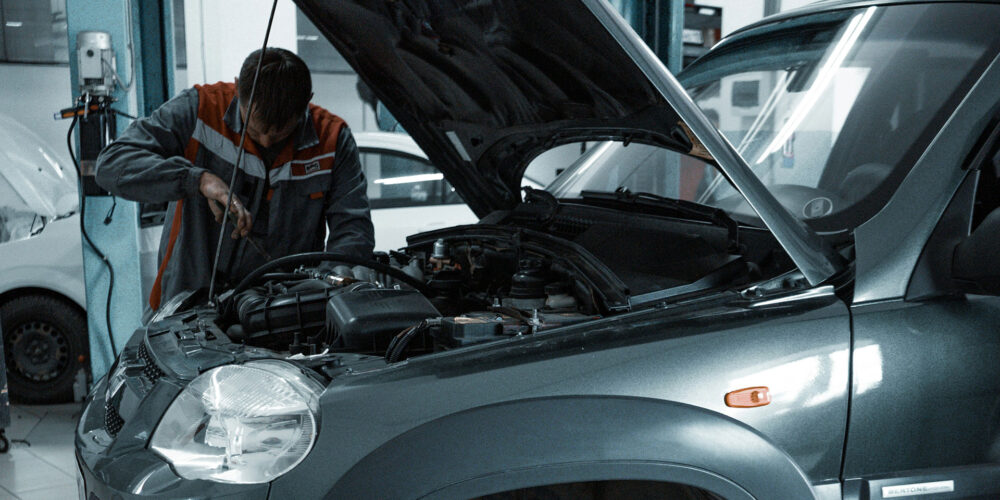In the not-so-distant past, a service book tucked into a glovebox, stamped by hand after every visit to the garage, was the go-to record of a vehicle’s maintenance history. Today, those dog-eared booklets are fast being replaced by something more sophisticated: the Digital Service Record (DSR). While some drivers may not even be aware their car has one, digital service history is now standard for most manufacturers, and understanding how it works could save you time, money, and hassle.
Whether you’re maintaining your own vehicle or preparing to sell it, getting to grips with your DSR is no longer optional. It’s a key part of modern car ownership and one that can have a direct impact on a vehicle’s value, reliability, and even warranty coverage.
What Is a Digital Service Record?
A Digital Service Record is an online system used by manufacturers and authorised garages to log a vehicle’s servicing and maintenance history. Instead of physical stamps, information is uploaded to a secure database, accessible by approved parties. This database typically includes the dates of services, the mileage at the time of each visit, the type of work performed, and the garage or dealer that carried it out.
Manufacturers like Audi, BMW, Ford, Mercedes-Benz, and Volkswagen (among many others) now use DSRs as standard. Some allow customers to view their records online or via an app, while others require you to request access through a dealer.
Importantly, DSRs are not just for new vehicles. Many independent garages are authorised to update these records, ensuring you don’t lose out on a complete service history just because you chose not to use a main dealer.
Why Does It Matter?
A full, up-to-date service history, especially one that’s recorded digitally, can significantly influence a car’s resale value. Prospective buyers want reassurance that the car has been properly looked after. A vehicle with incomplete or missing service records can lose hundreds or even thousands of pounds in perceived value.
But it’s not just about resale. Some manufacturer warranties and service plans are contingent on having your services logged within the official digital system. If you’ve had work done at an unauthorised garage and the DSR wasn’t updated, you could find yourself unexpectedly out of warranty.
Having a digital trail also protects you in the event of disputes. Whether it’s about mileage discrepancies, warranty eligibility, or proving that a recommended service was completed, a DSR acts as a central, time-stamped record.
How to Access Yours
Accessing your DSR can vary depending on the make of your vehicle. Some manufacturers provide direct access through an owner portal or mobile app. For example, Mercedes-Benz uses “Mercedes me,” while BMW has its ConnectedDrive platform. Others require you to request the data from a dealer or service provider.
If you’re not sure whether your car has a digital record, a quick phone call to the manufacturer’s customer service line can help clarify things. You’ll typically need your vehicle’s VIN (Vehicle Identification Number), which can be found on your V5C logbook or on the car itself.
Independent garages authorised to update DSRs will usually confirm that the update has been logged. Don’t be afraid to ask for evidence; it’s your right as the vehicle owner.
What’s in a DSR?
A typical digital service entry includes:
- Date of service
- Mileage
- Type of service (e.g. interim, major, oil change, brake fluid, etc.)
- Service location (including garage name and ID)
- Work carried out
Some systems also include MOT results, software updates, recalls completed, and advisories.
It’s important to note that not every type of car repair or maintenance needs to be logged. Minor work, like replacing wiper blades or tyres, may not appear unless requested. However, anything that’s part of a scheduled car service should be included.
Common Misunderstandings
Many drivers believe that once they leave the main dealer network, their DSR becomes irrelevant. That’s not true. Independent garages that are approved by the manufacturer (or that have access to the relevant portals) can still maintain your digital record.
There’s also a misconception that DSRs are only for brand-new vehicles. In reality, they’re valuable across the entire lifespan of the vehicle. Even if your car is out of warranty, a complete DSR can help protect its value and provide peace of mind.
Some owners assume that a printed service invoice is enough. While these documents are useful, they don’t always replace the need for an official DSR entry, particularly if your warranty or extended service plan depends on it.
Choosing the Right Garage
When booking a service, it’s worth checking whether the garage is authorised or has the tools to update your DSR. Not all independents do. Our approved garages are equipped to update DSRs for many of the UK’s most popular vehicle brands.
Ask in advance whether a digital update will be carried out and get confirmation afterwards. You can also request a printout or PDF of the updated DSR entry for your own records. Ideal if you plan to sell the vehicle privately.
Why DSRs Are Here to Stay
Digital service records are fast becoming a standard expectation in the used car market and an essential tool for staying on top of your car’s health. As vehicles become more connected and technology-dependent, the ability to track their maintenance history digitally offers greater transparency and accountability.
While the transition away from paper may feel unfamiliar to some, it ultimately benefits both owners and buyers. If you haven’t checked your DSR recently (or didn’t even know you had one), now is the perfect time to take control of your car’s service story.

